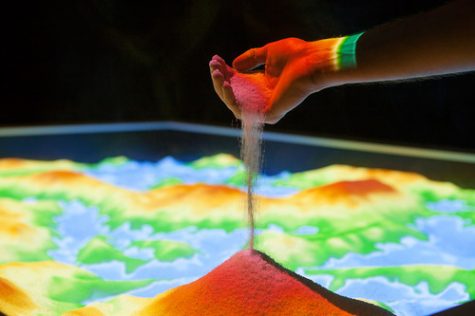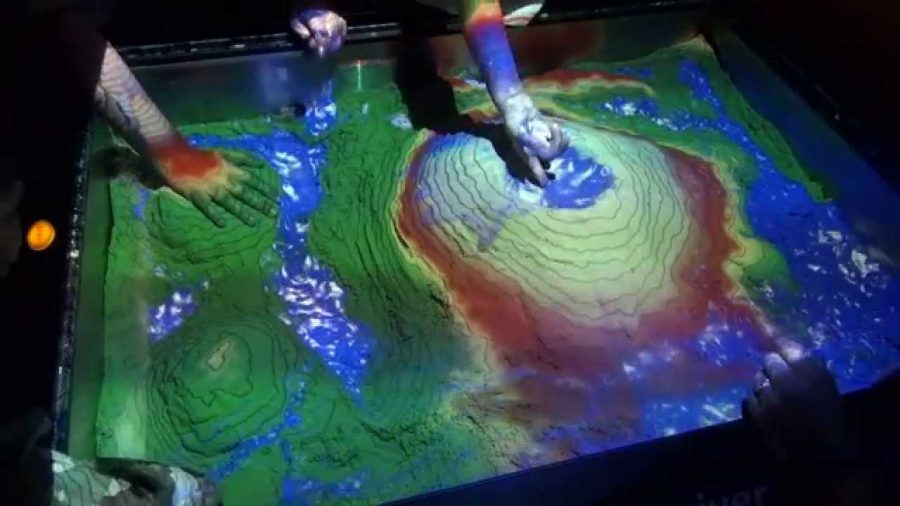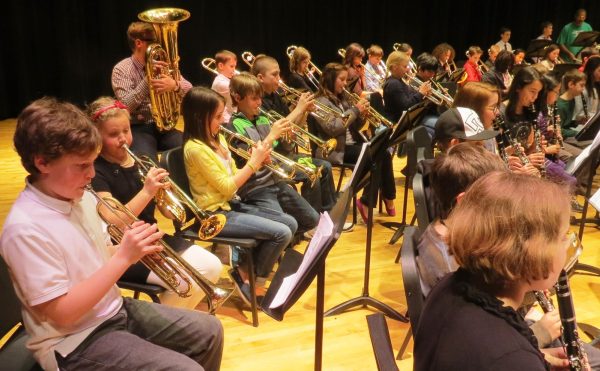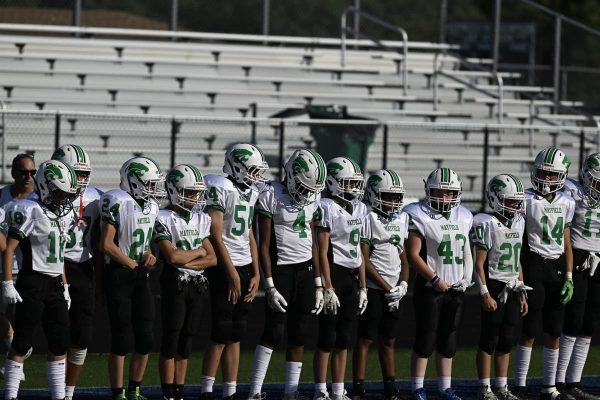Mr. Lubin’s Fancy Sandbox
An augmented reality sandbox has recently been added to eighth-grade team Hele science teacher, Mr. Lubin’s room in Mayfield Middle School. This sandbox gives the students a hands-on way of learning about erosion and deposition of the earth’s surface.
Here is the gist: It is a sandbox with an Xbox 360 Kinect that reads the height of the sand. The elevation is sent to a computer that color codes the data and sends it to a projector that projects it on the sand like a topographic map.
The design for the sand box came from University of California, Davis. According to the product’s website, “AR Sandbox is the result of an NSF-funded project on informal science education for freshwater lake and watershed science developed by the UC Davis’ W.M. Keck Center for Active Visualization in the Earth Sciences (KeckCAVES), together with the UC Davis Tahoe Environmental Research Center, Lawrence Hall of Science, and ECHO Lake Aquarium and Science Center.”
Mr. Lubin, after seeing videos of the device on the internet, knew MMS needed one, so one was created using a mounted projector, laptop, Xbox 360 Kinect, and a sand box. Using the program provided by USC Davis, Mr. Lubin along with Mr. McGinnis, the middle school’s custodial head, and Mr. Jianetti, a member of the IT department, built and programmed the sand box.
The innovative sandbox was funded by Dr.Ward’s PBL (project-based learning) grant.

The sandbox will be used in Mr. Lubin’s class this year to help students understand the surface water erosion unit. He used the box to show the students a physical version of surface-water formed features including rivers, deltas, lakes, headlands, beaches, sea stacks and wave cut terraces. All features formed due to surface water erosion.
The students were also able to use the sandbox to create their own land forms. The projector creates a topographic map, which changes with each move of the sand along with the ability to add “rain” by placing their hand under the projector to create “clouds”. Students are able to move and create hundreds of land forms and explore how water interacts with them.
The kids in Mr. Lubin’s class enjoyed the sand box and interacting with it. Meg Linsky said, “I was not expecting it to be that innovative,” and “I thought it was cool how if you move some sand the rest of the sand moves with it.”
Mr. Catullo, another Team Hele teacher says “It’s sweet!” He added that he likes “how adaptive it is and how if you move it, it will adjust to show land and water formations.”
This sandbox is an innovative new way of teaching students how the earth works and will be a great and fun way of teaching students in the future. Students on other eighth-grade teams will gain access by teachers trading classrooms.
Want one? On Amazon, you can buy one for the price of $7,390 plus the $150 shipping if you’re interested.
Video by Gabi Polin











